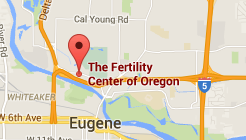What are GnRH Analogs?
Gonadotropin Releasing Hormone (GnRH) Analogs are a group of medications which reduce the production of hormones (estrogen and progesterone) by the ovaries. GnRH Analogs work by blocking the effect of Gonadotropin Releasing Hormone on the pituitary gland in the brain. These medications must be given by injection or nasal spray because they are inactive when taken by mouth. The result of GnRH Analog therapy is to create a “temporary menopause” condition which is used to treat a variety of problems including ovulation disorders, endometriosis, uterine fibroids, precocious puberty, and some types of cancer. GnRH Analogs are also used in G.I.F.T. and I.V.F. cycles to improve the number and quality of eggs available for fertilization.
How do they work?
GnRH Analogs act by suppressing the pituitary hormones (FSH or Follicle Stimulating Hormone and LH or Luteinizing Hormone) which are responsible for stimulating the ovaries to produce estrogen and other hormones. This suppression results in the reduction of these ovarian hormones to very low levels as would be found in the menopause. For ovulation induction, GnRH Analogs reduce the interference of the pituitary gland with the development of eggs when Metrodin/Humegon is administered. Most women will have a better response to Metrodin/Humegon (higher estrogen levels and more eggs) with the simultaneous use of GnRH Analogs. For endometriosis and uterine fibroids, the very low levels of estrogen on GnRH Analog therapy cause these conditions to regress or “dry up”. Unfortunately, this effect is not permanent and these conditions will usually return 6-18 months after the discontinuation of the treatment. GnRH Analogs are most often used to treat endometriosis and uterine fibroids in preparation for surgical treatment or in women with infertility as their main problem.
Why are they used?
GnRH Analogs are used for ovulation induction because they allow a better and more predictable response to Metrodin/Humegon in women with ovulation disorders and for G.I.F.T. and I.V.F. cycles. Pregnancy rates on GnRH Analogs are generally higher than with Metrodin/Humegon alone and there are less “canceled cycles” for unsatisfactory response of the ovaries. For endometriosis and uterine fibroids, GnRH Analog suppression may have fewer side effects than other medications such as Danazol, and may improve the chances of pregnancy immediately after stopping the treatment. In addition, GnRH Analog suppression before surgery for these problems may decrease blood loss, decrease adhesion or scar formation, and increase successful outcome for future pregnancy.
Which GnRH Analogs are commonly used in gynecology?
Lupron was the first such medication to be used and has been available since 1986. It is given as a small daily subcutaneous (under the skin) injection or as a long-acting monthly intramuscular (IM) injection. Synarel is the newest form of GnRH Analog and was released in early 1990. It is given as a twice-daily nasal spray. Both drugs are similar in action but differ in length of effect as well as mode of delivery.
Are there any side effects or complications?
GnRH Analogs may cause temporary symptoms of the menopause in some women including hot flushes, headaches, nausea, mood changes, decrease in breast size, and vaginal dryness. During the first few days on the medication, some women will experience mild fluid retention, breast tenderness, and symptoms as though their period is about to start. These symptoms are usually mild and generally are not significantly bothersome. There may be temporary burning, itching, swelling, discoloration of the skin, or soreness at the injection site with LUPRON although this is not common. All of the effects of GnRH Analogs on the ovaries are rapidly reversed when the medications are stopped. There are no reported serious complications from these medications, and there are no reported adverse effects on pregnancy or the future child.

